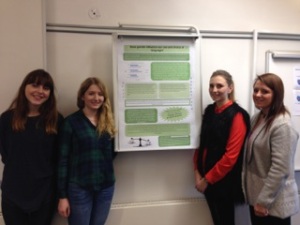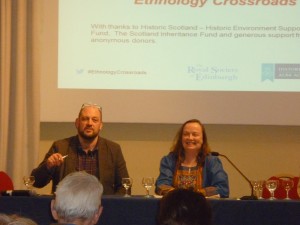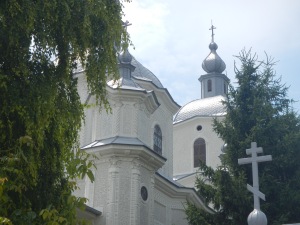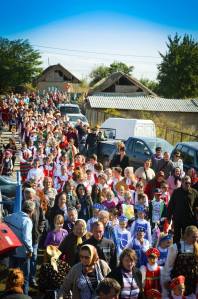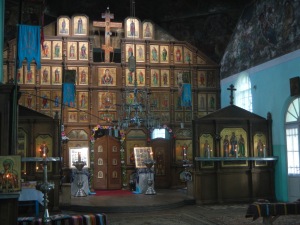by Ullrich Kockel
In socio-cultural research, there has been a long-running argument pitching “roots” against “routes” as the source of identity. At a time when identities appear to become ever more detached from territorial connections, it makes sense to define cultural belonging in terms of the intensity of communication within one’s social field, even though individual biographies highlight a problem of context. According to this theory, I would have been an Irishman during the decade 1978-88 when my social field was made up primarily of Irish migrants in Hamburg, Bremen and Leeds before I went to live in Galway and Kerry for three years, where I would have been German. In Liverpool during 1988-1992, I would have been mostly English, then Irish again during 1992-99, German during my time in Bristol 2000-05, and during my seven years in Ulster I could have been Irish or British, depending on the situation. It might be tempting to see this as confirming the popular theory of a postmodern identity warehouse – but I am not convinced.
Outside of Germany, German minorities in Europe have been rather neglected in cultural research. In 2002, Stefan Wolff (himself a German in Britain) presented a survey concentrating on groups that previously would have been described as ‘ethnic Germans’, living in areas designated as ‘German linguistic territory’ and its Sprachinseln (linguistic islands), located mainly in eastern Europe. Panikos Panayi in 1996 offered a first overview of Germans in Britain. Across the British Isles there is a scattering of mostly small local concentrations of migrants with a German background. Some of these local concentrations can look back on a long history as a ‘German community’ or ‘German congregation’, even if, in most cases, that history remains yet to be written. From the early 1970s onwards, following the accession of both the United Kingdom and the Republic of Ireland to the European Communities, there was an influx of ‘drop-outs’ and part-time migrants of various description, many of whom settled on the ‘Celtic Fringe’ of these islands, in Ireland, Scotland and Wales.
My research on German emigration to the British Isles emerged originally as a by-product of my doctoral dissertation on regional development and everyday culture in the west of Ireland, and in the lecture I will make some reference to this earlier work. Over some three decades – as I turned from student and temporary migrant to being a long-term career migrant – I began to explore this topic in greater depth, which included an element of self-reflexivity.
In the relationships between migrants and host society it is evident that cultural connections with the homeland continue to exist even where migrants may have consciously turned their backs on that country, while cultural connections with their new country of residence have their limits even where considerable efforts are invested to achieve integration. European integration and the globalisation of trade have altered the everyday lived experience of today’s migrants significantly in comparison with previous generations. Conscious ‘rooting’ in the new context nevertheless remains rather difficult. For all the assumed cultural proximity within Europe, it can be shown that within the German cultural experience in the British Isles, spaces and places of concrete everyday belonging are created where elements of ‘German’ culture can find expression.
A handful of themes may be identified that extend across different generations of migrants. These include in particular issues of language and communication in the widest sense, as a process formed by values and patterns of behaviours that have their roots in the childhood of the individual. This applies not only with regard to feast days and holy days in the annual as well as the individual life cycle, but equally in everyday life: from table manners to ways of greeting, leisure habits or ideas and rituals of cleanliness. Habitual attitudes and patterns of behaviour become problematic when they lose their casualness in the encounter with another, foreign life-world.
Since the 1990s, satellite television and the expansion of international traffic infrastructure have made it much easier for emigrants to stay in contact with their country of origin. The food situation has improved, thanks to the internationalisation of trade – although the conversation between two Germans meeting for the first time in these islands often still takes only a few minutes before it turns to the inexhaustible topic of ‘decent bread’.
It has become much less complicated than only a few years ago to identify oneself culturally as German. Moreover, it has become easier to feel ‘Irish’, ‘English’, ‘Scottish’, ‘Welsh’ or ‘British’, or to alternate freely between a globalised version of any of these and an equally globalised German identity. But the postmodern identity-sunshine, forecast to bring about the dissolution of identities in some multicultural ‘melting pot’, has not materialised.
When German migrants talk about their identity, they often use the term Heimat. Many migrants have lived in these islands for a long time, often longer than they ever lived in Germany, and now have children or grand children here. Remarkably, the meaning of the term Heimat for 25-year old migrants differs little from its meaning for 75-year olds. Even in a globalised world, people that come from another country remain ‘others’. This includes German migrants in these islands, even if they have been living here for a long time and have become relatively well integrated.
In contrast to immigrants in the nineteenth century, and also to the mainly Jewish refugees in the 1930s and early 1940s, today’s German migrants are not creating any ‘little Germanies’ in the sense of entire streetscapes, or urban or rural districts, with a distinctly German character. It has become much easier over the past two decades to be German – or whatever else – in Britain, Ireland or anywhere else in the western world. The everyday experience of German migrants in these islands is full of what social scientists call ‘third spaces’. Only, these are no longer streetscapes with an unmistakably German imprint, but rather scattered places where people come together. These migrants’ roots in Germany are both more and less pronounced than they appear to have been for previous generations. To unravel this apparent contradiction by comparative research looking at other migrant groups would be a rewarding task for further field research. Current projects at the IRC researching Baltic and Polish migration are a start; but that is a topic for another occasion.
GERMANS IN BRITAIN is a touring exhibition created by the Migration Museum Project. It is brought to Scotland on the initiative of Heriot-Watt’s Intercultural Research Centre with the generous support of the German Consulate-General Edinburgh, the National Records of Scotland and the University of Aberdeen.



